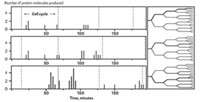Advertisement
Grab your lab coat. Let's get started
Welcome!
Welcome!
Create an account below to get 6 C&EN articles per month, receive newsletters and more - all free.
It seems this is your first time logging in online. Please enter the following information to continue.
As an ACS member you automatically get access to this site. All we need is few more details to create your reading experience.
Not you? Sign in with a different account.
Not you? Sign in with a different account.
ERROR 1
ERROR 1
ERROR 2
ERROR 2
ERROR 2
ERROR 2
ERROR 2
Password and Confirm password must match.
If you have an ACS member number, please enter it here so we can link this account to your membership. (optional)
ERROR 2
ACS values your privacy. By submitting your information, you are gaining access to C&EN and subscribing to our weekly newsletter. We use the information you provide to make your reading experience better, and we will never sell your data to third party members.
Biological Chemistry
Publications: Genomics Papers Are Tops In Citations
Biochemistry was the leading discipline, and genomics the hottest topic
by Stephen K. Ritter
December 19, 2011
| A version of this story appeared in
Volume 89, Issue 51
COVER STORY
Publications: Genomics Papers Are Tops In Citations
Some scientists put a lot of stock into how many times other scientists cite their research papers. Using the most-cited chemical science papers from 2001 as a guide, C&EN took a look back to see which research topics were leading the way that year. The number one topic was genomics.
“It’s no surprise that two of the most highly cited journal articles from 2001 are the historic and publications on the initial sequencing of the human genome,” says Roger Schenck of the American Chemical Society’s Chemical Abstracts Service, who conducted the literature search for C&EN. The human genome publications, ranked at second and third most cited, not only document the public and private efforts to chase down and spell out the human genome, Schenck adds, but also illustrate two very different methodological approaches to gene sequencing.
Beating the genome-sequencing reports as the most-cited paper from 2001, however, is one in the journal . The paper, from lead author Thomas D. Schmittgen, who was then at Washington State University and is now at Ohio State University, describes a method for analyzing relative changes in gene expression as determined from real-time quantitative polymerase chain reaction (PCR) experiments.
“Although much less celebrated compared with publications such as the human genome sequencing papers in the same year, the methodology for genomic studies using quantitative PCR has stood the test of time,” Schenck says. “Its value is unmistakable by the number of scientists who have cited its use to advance their own research.” Schenck adds that it’s interesting to note that the top three citations all relied on PCR, which was the basis of the Nobel Prize in Chemistry in 1993, less than a decade before.
Weighing in at fourth place of most-cited 2001 papers is a study led by Thomas Tuschl, then at the Max Planck Institute for Biophysical Chemistry, in Göttingen, Germany, and now at Rockefeller University. In Nature, Tuschl and his colleagues reported using synthetic strands of RNA, called small interfering RNAs, to silence genes and selectively shut down protein synthesis in mammalian cells (see page 19).
And rounding out the top five is another methods paper, published in from a team led by Stanford University’s Gilbert Chu. The researchers described a method for using microarrays to analyze changes in gene expression of thousands of genes in response to ionizing radiation.




Join the conversation
Contact the reporter
Submit a Letter to the Editor for publication
Engage with us on Twitter